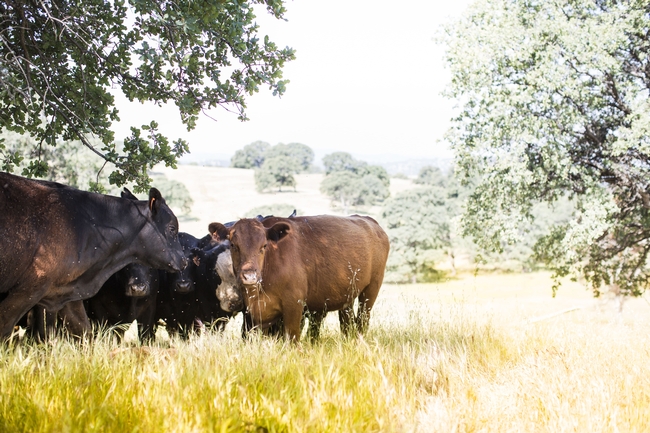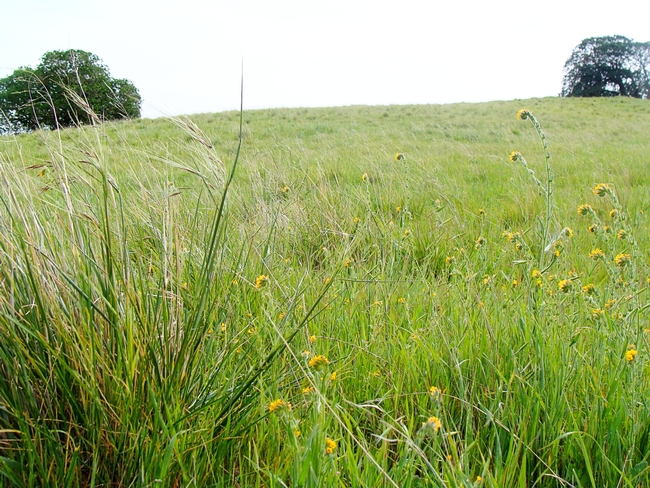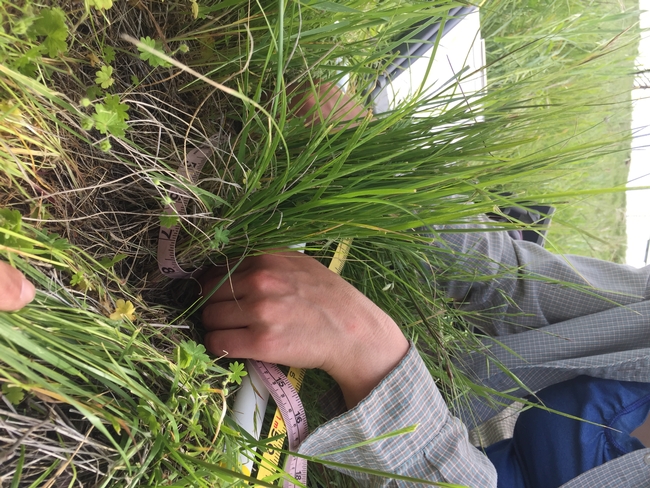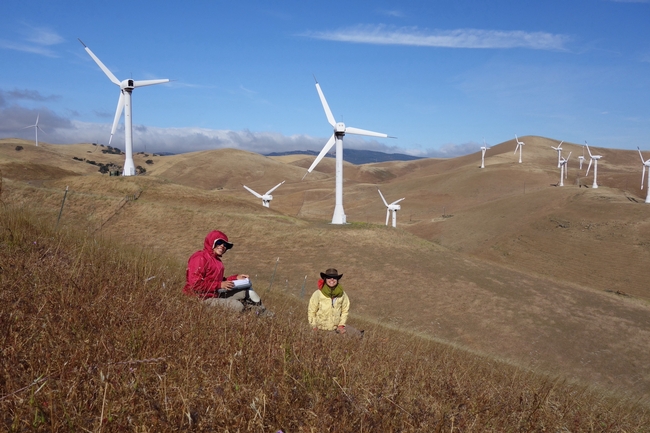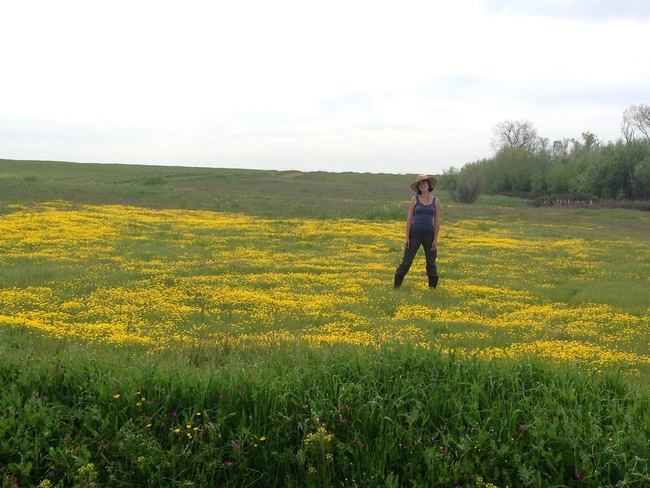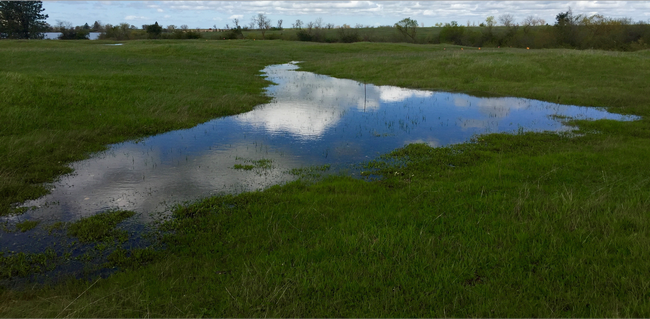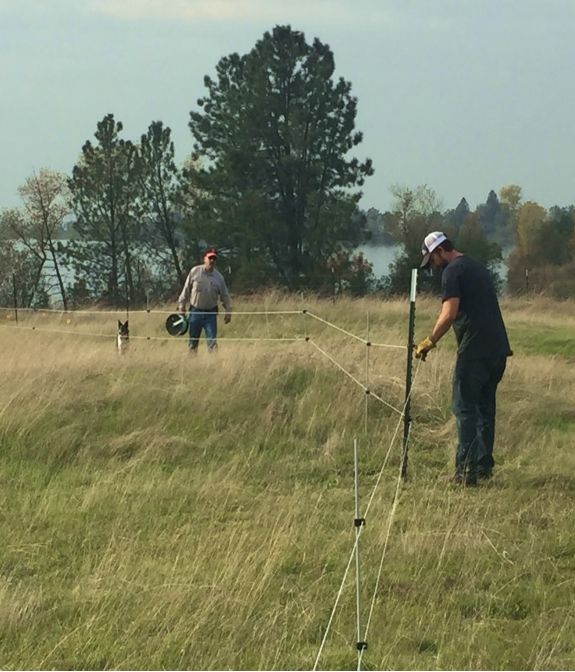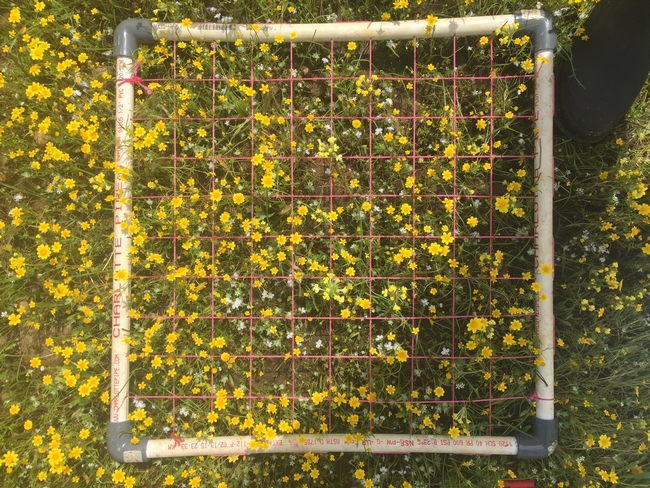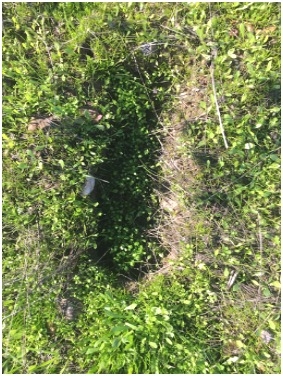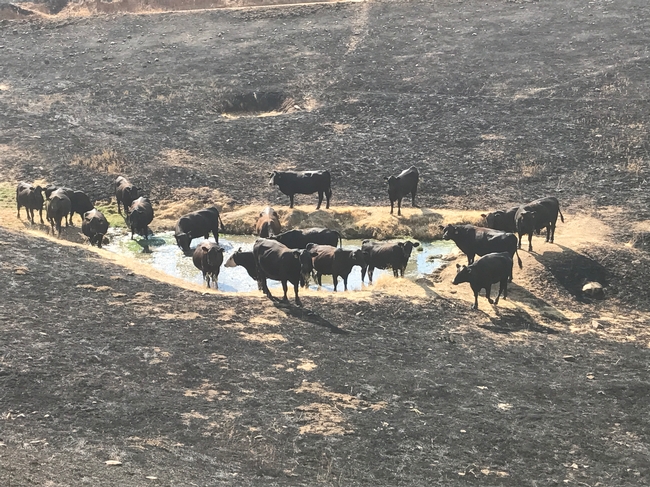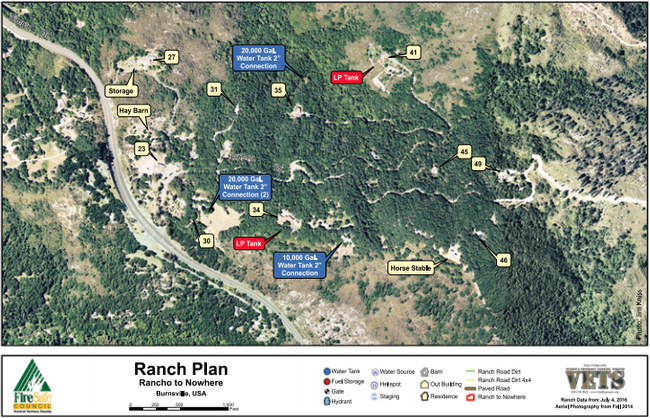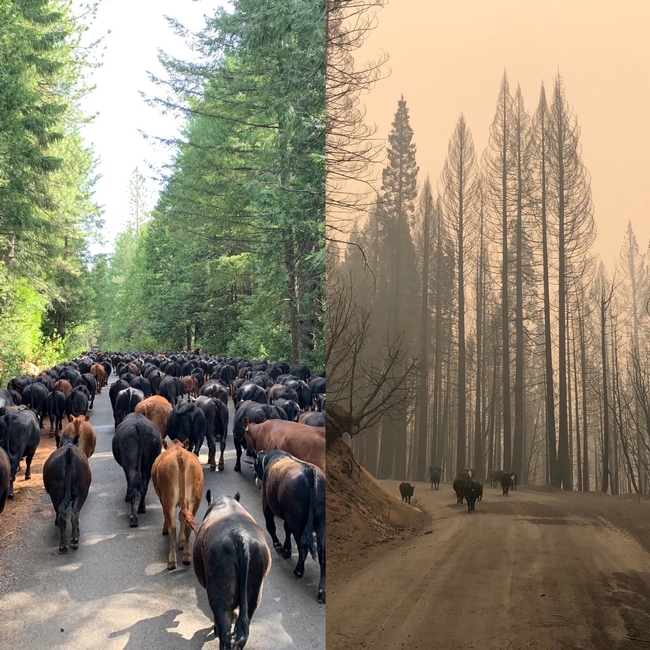Posts Tagged: cattle
Fighting fire with feeding
Are cattle a secret weapon for taking on California wildfires?
California's cattle ranchers contribute a significant amount to the region's culture, economy and food supply, but do they also inadvertently help to temper the wildfires that have been plaguing the state? And if so, is it a better alternative – environmentally speaking – to letting grasslands burn?
A new study published in the journal Sustainability delves into the topic, weighing the advantages – and disadvantages – grazing cattle bring to the table. Researchers, including scientists from University of California, Davis and UC Agriculture and Natural Resources, set out to calculate the greenhouse gas emissions of cows consuming vegetation that would otherwise burn in wildfires. Then they estimated the GHG emissions that would result should that forage be untouched and therefore, consumed by fire, eventually comparing the two.
Feeling the burn
Given the severity of California's recent wildfires and the belief they will continue and even escalate in the near future, it's a discussion worth having, said Frank Mitloehner, an expert in animal agriculture and air quality from UC Davis, director of the CLEAR Center and one of the researchers who contributed to the peer-reviewed article.
“Each year from 2010 to 2020, California lost on average 89,000 acres of grassland to wildfires,” said Mitloehner, who is also a Cooperative Extension specialist. “In addition to the obvious disruption and devastation they caused, the fires spewed greenhouse gases and harmful particulate matter such as black carbon into the air and into our atmosphere. Those alone threaten climate health and human well-being.”
A fast and furious gas
Cattle are adept at eliminating herbaceous fuel as they graze. However, at the same time, their specialized digestive system produces methane that is expelled most often in the form of enteric emissions … more commonly known as belches. By way of background, methane is a potent greenhouse gas that warms the atmosphere at 25 times the rate of carbon dioxide over 100 years. But it's only in the atmosphere for 10 to 12 years after it's emitted. Following that, it's broken down into carbon dioxide and water vapor.
For that reason, Mitloehner refers to methane as a “fast and furious” gas. Furious because it warms with a vengeance and fast because it does so for only a short time, especially when compared to carbon dioxide. Furthermore, because of the biogenic carbon cycle, whereby plants extract carbon dioxide from the atmosphere for photosynthesis, the warming of methane and its byproducts can end entirely when it's hydrolyzed and used by plants.
How researchers calculated emissions
In order to determine if grazing, methane-emitting cattle are better for the atmosphere than burning grasslands, Mitloehner and the other researchers employed a method known as “Monte Carlo simulation,” a mathematical technique used by scientists to predict outcomes of an uncertain event.
Looking exclusively at methane emissions, they found it's better to have cows eat vegetation than to have wildfires burn it. Granted, it's only marginally better, but when one considers other advantages of animal agriculture and conversely, other disadvantages of widespread, uncontrolled fire, the conversation suddenly shifts.
“Even if cattle provided no other benefit to us, which certainly is not true, we can now make the case that they are helpful to us in yet another way,” Mitloehner said.
Friends or foes?
It goes without saying that one would be hard pressed to find much good to say about wildfires, but that doesn't hold true for animal agriculture. The industry provides jobs and supports the economy in other ways as well. Plus, it is a major source of protein-rich food that is in increasing demand as the world's population continues on a trajectory toward 10 billion people by the year 2050.
Where global warming is concerned, the industry is in the unique position of being able to reach net-zero warming, also known as climate neutrality, if it continues to aggressively chip away at its methane emissions, which Mitloehner asserts is of critical importance to the planet. “Few other sectors can reduce its warming to net zero and still be of service to society, but agriculture can because of the way methane behaves in the atmosphere,” he says.
To be clear, grazing cows are no match for wildfires. Yet, in addition to everything else the sector does for us, slowing the burn and keeping relatively more methane from entering the atmosphere are not nothing.
In addition to Mitloehner, authors of the study are Cooperative Extension advisors Sheila Barry, Devii Rao and Theresa Becchetti; Rowan Peterson, Ermias Kebreab and Minju Jung of UC Davis; and Felix Ratcliff and Kaveh Motamed of LD Ford.
This article was first published on the website of the CLEAR (Clarity and Leadership for Environmental Awareness and Research) Center at UC Davis.
Buying Livestock Drugs in California
A livestock producer recently contacted UCCE regarding a problem he was having getting livestock dewormers shipped to a California address from...
The no-tech way to preserve California’s state grass
Disappearing native is like an environmental Swiss Army knife
Though it is disappearing, California's official state grass has the ability to live for 100 years or more. New research demonstrates that sheep and cattle can help it achieve that longevity.
Purple needlegrass once dominated the state's grasslands, serving as food for Native Americans and for more than 330 terrestrial creatures. Today, California has lost most of its grasslands, and the needlegrass occupies only one tenth of what remains.
It is drought resistant, promotes the health of native wildflowers by attracting beneficial root fungi, burns more slowly than non-native grasses and speeds the postfire recovery of burned lands. For these and other reasons, many who work toward habitat restoration hope to preserve the needlegrass.
“Where it grows, these tall, slender bunches become focal points, beautiful as well as environmentally beneficial,” said Loralee Larios, a UC Riverside plant ecologist affiliated with UC Agriculture and Natural Resources. “However, identifying successful management strategies for a species that can live for a couple hundred years is challenging.”
To meet that challenge, Larios teamed up with University of Oregon plant ecologist Lauren Hallett and Northern California's East Bay Regional Park District. They tracked the health of nearly 5,000 individual needlegrass clumps over six years, including an El Niño rain year as well as historic drought.
The researchers took measurements of plant health including growth and seed production. They placed small bags over many of the grass clumps to capture the seeds and quantify the number of seeds they produced.
Their findings, now published in the Journal of Applied Ecology, were that purple needlegrass did better in places where sheep were allowed to graze. The positive effects of the grazing were amplified in times of wetter weather.
Previously, the park district spent a decade trying to assess the success of its grassland maintenance techniques. However, the district's method of applying a strategy like grazing, and then measuring the percentage of needlegrass clumps in a given area resulted in data that didn't follow a discernable pattern from year to year.
“By tracking each plant over time, rather than scanning broadly across an area, we gained much more clarity about how the grass responds to the grazing,” Larios explained. “Perhaps counterintuitively, we saw that the needlegrass generally died back when sheep weren't allowed to graze on it.”
When sheep were removed from the study sites, the needlegrass in all but two of the sites became less healthy. The researchers would like to learn whether the two sites that remained healthy have needlegrasses that are genetically distinct.
Grazing is a controversial strategy for grassland restoration. Some conservationists believe sheep eating the target grass, particularly during already stressful drought years, does not enhance their survival. As far back as the 1800s, some researchers hypothesized that the combination of grazing and drought resulted in the loss of perennial grasses.
Though drought was not beneficial for any of the plants in this study, the researchers believe grazing helped needlegrass survive in at least two ways. One, by trampling on leaf litter and other organic debris, sheep created space for new needlegrass to grow.
“Sometimes you get litter that's as deep as a pencil — so much dead, non-native grass piles up. It's hard for a little seed to get enough light through all of that,” Larios said.
Secondly, sheep eat non-native grasses that generate growth-suppressing debris and compete with purple needlegrass for resources.
When the Spanish colonized California, they brought forage grasses like wild oats that they thought would benefit cattle. Those introduced grasses spread, and now dominate the state's grasslands.
“Our grasslands are known as one of the world's biggest biological invasions,” Larios said.
California has as many as 25 million acres of grasslands, equivalent to the combined areas of Massachusetts, Connecticut, and Rhode Island. Though Larios does not believe it is possible to rid the state of all non-native grasses, she said it is possible to maintain or even increase the amount of purple needlegrass.
“It's great for carbon storage, which mitigates climate change, it doesn't serve as wildfire fuel, and cultivates a space for wildflowers that pollinators are then able to use,” Larios said. “We want to keep all those benefits.”
Once perceived as a problem, conservation grazing by cattle a boon to vernal pools
Giving 1,200-pound cows access to one of California's most fragile and biologically rich ecosystems seems a strange way to protect its threatened and endangered species.
But a recently published study suggests that reintroducing low to moderate levels of cattle grazing around vernal pools – under certain conditions – leads to a greater number and greater variety of native plants.
Ecologists consider vernal pools – ephemeral ponds that form seasonally – “islands of native habitat” amid California's grasslands that are dominated by exotic grasses. These biodiversity hotspots harbor about 200 native species of animals and plants, such as the coyote thistle, which germinates under water and forms a snorkel-like straw to deliver oxygen to its roots – and then “fills in” its stem as the pool dries.
Specially adapted to survive in those stages of wet and dry, many of these species are found only in vernal pools scattered across California – making those pools an urgent priority for conservationists.
During the 1970s and 1980s, vernal pools were fenced off in parts of the state, in the hopes of protecting the flora and fauna from grazing cattle. In the early 2000s, however, UC Davis researcher Jaymee Marty found that grazing was actually crucial to vernal pool biodiversity: once livestock were removed from areas that had been grazed historically, the diversity of plants plummeted.
“Her research was critical to rethinking the best ways to protect the diversity in California's vernal pool ecosystems,” Eviner said.
The Michaels-led study, published in the Journal of Applied Biology, builds on Marty's work, by looking at scenarios where cattle had been blocked from vernal pools for decades, and then observes the rate at which biodiversity returns after reintroduction of the animals. Michaels said she wanted to provide some initial answers to the practical questions that ranchers and land managers have in potentially reintroducing cattle.
“A lot of them had these areas that had been fenced off from grazing for the last 20–30 years, and they were very concerned about what happens if we let cattle back onto these vernal pool grasslands – are there going to be negative impacts because that land had been at rest for a few decades?” Michaels explained.
They discovered that, after reintroducing cattle to areas that had been fenced off since the 1970s, there was a greater abundance of native flora (species like the vernal pool buttercup, bractless hedge-hyssop and bristled downingia), as well as increased diversity among the plants (both in number of species and in how evenly distributed they were).
“Encouragingly, diversity is rapidly restored,” Eviner said, “providing conservationists with strong data to show that rapid action can enhance plant diversity.”
And as for potential worries about cattle making a snack of vernal pool plants, Michaels and her colleagues observed that the cattle appear to be more interested in munching on grasses.
“Anecdotally, we saw very few signs of herbivory on the vernal pool species because the timing is such that [the plants] are underwater for a good part of the late winter and early spring, and then by the time they're blooming, there's plenty of good forage around for the cattle,” Michaels said.
In fact, the cattle seem to be performing a function filled for millennia by native grazers (namely, the once-abundant tule elk), helping to knock down vernal pool species' chief competitor in those transition zones: the grasses.
Instead, microdepressions created by the cattle appeared to encourage the proliferation of native plants. Each hoofprint became a miniature basin – “a vernal pool within a vernal pool.”
“Right in those transition zones, where they could be hosting either the vernal pool species or the upland grasses, just a couple centimeters of soil topography can make a big difference,” Michaels explained. “If a cow comes and steps in that transition zone, and that lowers the soil surface so it stays inundated a little longer, you end up seeing these pockets of vernal pool species that are able to persist.”
Michaels is currently conducting a follow-up study on the hoofprints to pinpoint their role in boosting native plant abundance and biodiversity. Because the prints can last for several years, they might be able to deliver some enduring benefits – and land managers might not have to bring cattle in to graze the pools as often.
“If it's really the hoofprints making the big difference, maybe we don't need to graze every year – only during certain times of year when we know the hoofprints will form well and harden, and then we're good for a few years,” Michaels said.
Ag Pass program aims to improve wildfire preparedness on rangeland
When the Detwiler Fire broke out near his family's ranch in 2017, Tony Toso was home to take defensive action to protect his family and animals. The Mariposa County rancher feels fortunate that he was on site.
“We were on the front end of the fire damage and it started on a Sunday,” recalled Toso. “Had I not been home that day, it would have been very difficult for me to access my property and help keep our livestock safe. Within a matter of hours of the fire starting, the CHP had our county road closed and would not let anyone in.”
Emergency personnel close roads around wildfires for the safety of people and to prevent them from impeding fire suppression efforts. When fire threatens large ranching operations, ranchers need to move their livestock out of harm's way and make sure they have feed and water. While volunteer groups can assist in rescuing dogs, cats, and a few sheep or horses, they don't have a rancher's knowledge, expertise and experience that are essential for managing hundreds of cattle at large-scale ranching operations.
To help rural communities prepare for wildfire, it would be helpful for farmers and ranchers to have a plan in place to coordinate with first responders, according to Max Moritz, UC Cooperative Extension wildfire specialist. Ag Pass is a program developed in Ventura County to identify farmers and ranchers to firefighters, law enforcement and other emergency personnel so they can allow them onto their property to rescue animals and identify access roads and water sources.
“Because fires are increasingly impacting people and are not going away anytime soon, we need to figure out approaches to sustainably live on fire-prone landscapes. In a broader sense, the Ag Pass is another way that we can adapt to, and coexist with, wildfire,” Moritz said.
Matthew Shapero, UC Cooperative Extension livestock and range advisor, and Moritz have written a publication to guide people who would like to create an Ag Pass Program for wildfire preparedness in their own locale.
“Our neighbors had cattle just north of us and they tried to get in and could not,” said Toso. “An Ag Pass in that situation, would have been a huge benefit had I not been at home and then wanted to access my property.”
In Ventura County, agricultural workers can apply for identification cards from the Central Ventura County Fire Safe Council, which verifies farm information through the county's pesticide applicator permit database. Ag Pass members provide detailed maps of their farms that show access roads – including many that don't show up on other maps.
Shapero, who works in Ventura and Santa Barbara counties, has been working with ranchers and county agencies to create an Ag Pass program in Santa Barbara County.
“The last few fire seasons have made a program like the Ag Pass more urgent than ever, especially as awareness of wildfire's impacts to agriculture has grown,” Shapero said. “We hope that this publication provides localities with a workable blueprint that will expedite the adoption of this or similar programs.”
Shapero has been working with Anthony Stornetta of Santa Barbara County Fire and representatives of other agencies to develop a training for Ag Pass participants in Santa Barbara County.
“After being at the Carr, Sonoma, Creek and Camp fires for months at a time, I started developing the program from the fire side and presented it to California Cattlemen's Association a couple years ago,” Stornetta. “This was a great collaborative effort. After meeting with our fire safe council, we are looking at the program being fully adopted very soon.”
In September, the Bear Fire raged through the Plumas National Forest where 400 of Dave Daley's cattle roamed to graze. The fifth-generation rancher wrote in moving detail of his grueling search for surviving cows in the rugged terrain during the wildfire and posted it to the California Cattlemen's Association website.
“I was unable to get access initially,” Daley said. “After working with our sheriff, I was able to get access through his office. But it required a deputy to take his time every day for 10 days to meet me at the roadblocks and escort me for several miles into our cattle range. I am very thankful for their willingness to do so. However, it was probably not the best use of their time when they were dealing with so many crises simultaneously and the fire was still raging. If there had been an Ag Pass system, that would have simplified the process, freed up law enforcement and given me a chance to save more cattle.”
Toso, the Mariposa County rancher and president of the California Cattlemen's Association, thinks a program as described in the UC Cooperative Extension publication benefits both ranchers and first responders.
“We can not only help protect ranching families, but we can use the opportunity to build working relationships and create trust between landowners and emergency personnel, as well as provide valuable information to those first responders from knowing the lay of the land,” he said. “Helping other counties and our member ranchers get a program on the books with their respective counties will be a priority for our organization.”
“Given each community's unique agency and personnel structure, it is our belief that the Ag Pass is best administered at the local or county level, however we are working with the state to see if policy measures can be developed that would simplify and support the Ag Pass concept,” Shapero said.
The training developed for Santa Barbara County includes an overview of hazards and safety issues, entrapment avoidance, incident organization, fire behavior, working with law and fire liaisons, access to incident, carding and certification. Stornetta anticipates the Santa Barbara County training will be held in spring 2021 and hopes it can be used in other counties as well. Ranchers who are interested in the Ag Pass training should contact Stornetta or Shapero.
“Preparing for Disaster: Establishing an Ag Pass Program in Your Community,” can be downloaded for free at https://anrcatalog.ucanr.edu/pdf/8685.pdf.
(First published Dec. 21, 2020)


